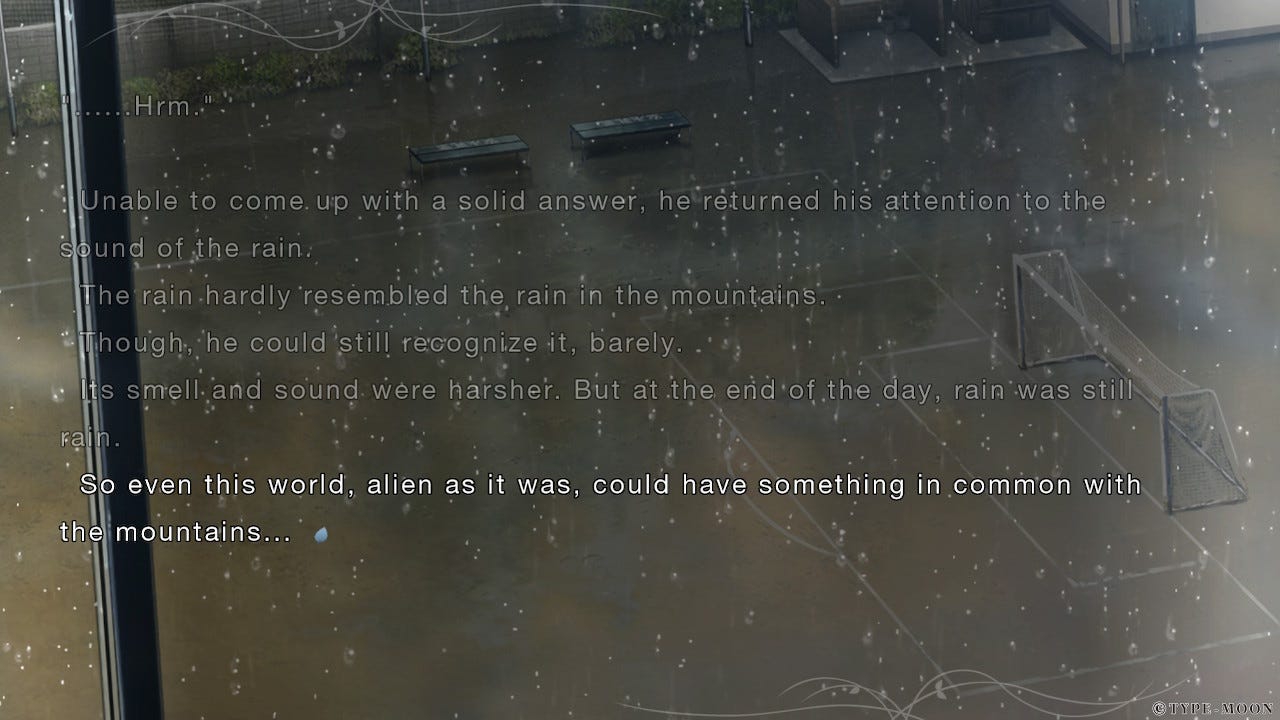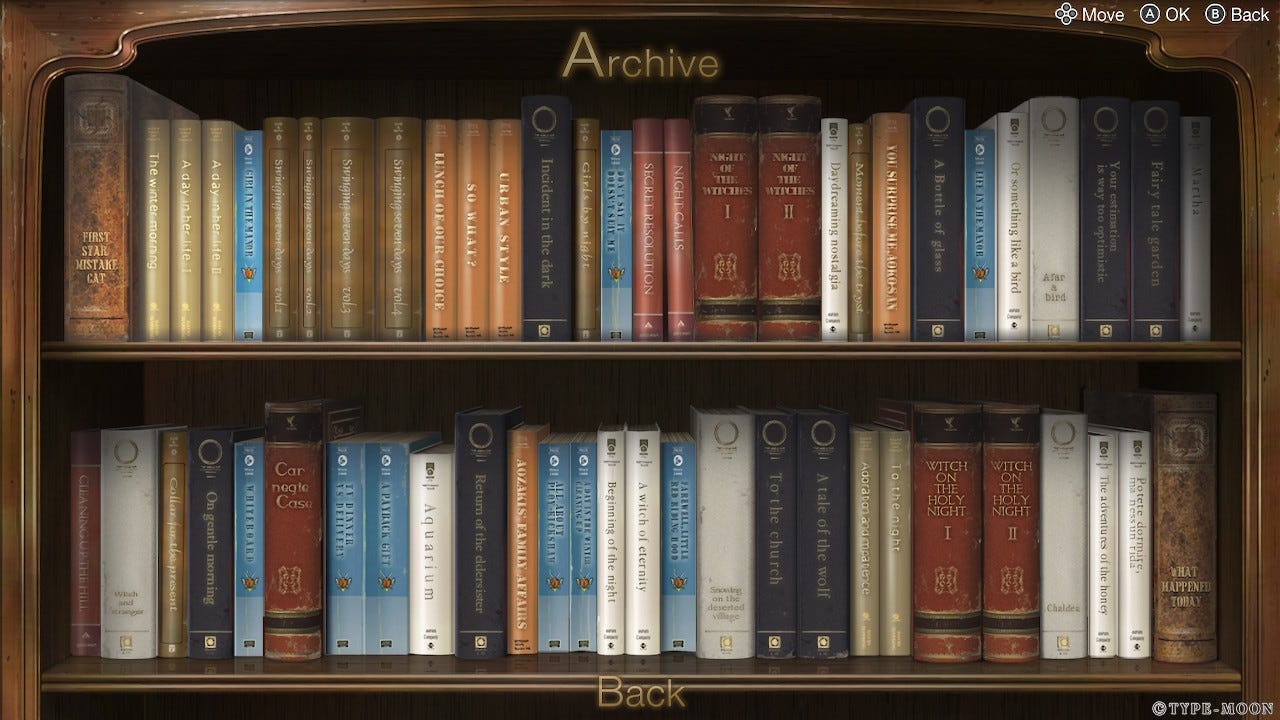You may not know of the visual novel Witch on the Holy Night, but you might know some of other ones from the same author, Kinoko Nasu, and the company Type Moon. Such as Tsukihime and Fate Stay Night, the latter of which has become a sizable franchise and is the basis for one of the most profitable mobile games.
Witch on the Holy Night first took form as an unpublished novel that is a predecessor to all of that. It was later turned into a visual novel and officially released, but for the longest time had no official English translation. Of course that’s also (and still) true of Tsukihime and Fate Stay Night, but unlike them there were no spin-off video games and anime to make English speakers aware of Witch on the Holy Night.
Naturally, the news of an official English release for Witch on the Holy Night came as a wonderful shock to fans of visual novels. The release wasn’t just about Witch on the Holy Night itself or its legacy, it created hope that its own success might herald other notable visual novels finally making their English debut.
Of course on its own, Witch on the Holy Night is something I found myself deeply enjoying. It’s worth experiencing even without all of the context behind it.
“There once was a manor on a hill where two witches lived,” that is a phrase used often when setting the scene of this story. The two witches in question are Aoko Aozaki, a highly driven apprentice mage, and Alice Kuonji, the reticent owner of the hilltop manor who mentors Aoko. By day the two attend different high schools, and it’s at high school where Aoko meets the third main character.
Soujyuro Sizuki is a boy from a village in the mountains without electricity who had to move to the city, where everything is strange, dangerous, and magical to him. By chance he ends up tangled in the affairs of Aoko and Alice. Meanwhile a rogue mage descends on the area with an agenda of their own.
Out of the various characters, my current overall favorite is Soujyuro. It can be easy to write him off as dense even with his fish out of water circumstances, but he’s far from an idiotic ingenue. Some of his struggles reminded me of my own experiences being on the spectrum. In a way Soujyuro has the clearest perspective of any character, taking none of the rules of society for granted.
And while I needed someone else to point it out, if you’re able to identify and connect the evidence hidden in plain sight throughout the game, a certain unspoken element of Soujyuro’s backstory becomes clear, one that changes the context of many scenes.
On the other hand, Aoko didn’t entirely hit the intended notes with me by the end. I can point to a specific scene as the reason for that, where I felt it did too good of a job of showing her crueler side for its point in the story. Aside from that she’s fine, she has plenty of good moments and nuance.
Alice is another character I found myself liking. Her nursery rhyme themed magecraft leads to some stand out moments for the story, and while generally putting on a cold stoic demeanor, she proves a good source of comedy. The development of her relationship with Soujyuro had me hooked, maybe a little too hooked relative to Soujyuro and Aoko’s relationship.
The presentation of this story is different from the standard character sprite with text box in front of them style visual novels are typically known for, going for a more prose focused and cinematic approach. It makes the whole narrative feel more dynamic than the average visual novel, even for a simple conversation. And like other visual novels, there’s music to help enhance the mood.
Witch on the Holy Night takes advantage of its video game status to offer the player/reader some freedom, with various bonus chapters that can be accessed after a certain point. While not needed for the main plot, they deepen the world, cast, and themes of the narrative.
Chapter 8.5 for example feels like an entire short story in itself, and is the reason Tobimaru is one of my favorite side characters in the game. And after seeing the end of the main story, you can play through a comedic side story with branching decisions, practically a visual novel within a visual novel. It all feels like well done fanfiction in how it expands on the narrative.
[The chapter select screen for Witch on the Holy Night takes the form of a bookcase that gradually fills out.]
Even just going through the main chapters, the pace of the story is slow. There are moments of action, including some lengthy fights, but what the narrative concerns itself with most of the time are quiet moments of daily life. It leans more towards maximalism than minimalism, contemplation over efficiency, it enjoys telling details about the world.
Overall the story has a sense of melancholic reflection, which is strengthened by it being set in the 80s and thus able to reflect on that time as a whole. This isn’t a reverent song of praise for a past decade, this is recalling a sandcastle washed away by the sea of time.
While I’ve grown more and more frustrated with the Fate franchise and its portrayal of various mythologies, it was nice to get a reminder that I do enjoy the original aspects of the ‘Nasuverse’ as fans call it. For example the magic and magecraft displayed is creative and fun to see in action, from a golem summoned by singing a nursery rhyme to an automaton that constantly chants curses.
To be clear, while there are ways in which knowing other Type Moon works will enhance your appreciation for Witch on the Holy Night, they’re not needed. In part this is due to how most of them are set after Witch on the Holy Night. For example the Melty Blood games feature Aoko as a playable character, specifically as an adult who has mellowed out a bit.
As a bonus, the physical edition for Witch on the Holy comes with an artbook (and short story) that advises you to only open it after completing the story. Within it are artist and writer commentary that include various mentions of plans for a sequel. I thought the story felt fairly complete on its own, but seeing the references to planned elements for sequels has me hoping we’ll see them at some point.
It look a long time, but I’m glad that Witch on the Holy Night came out in English and I was able to read it.









Great review and write-up. These visual novels have me intrigued!